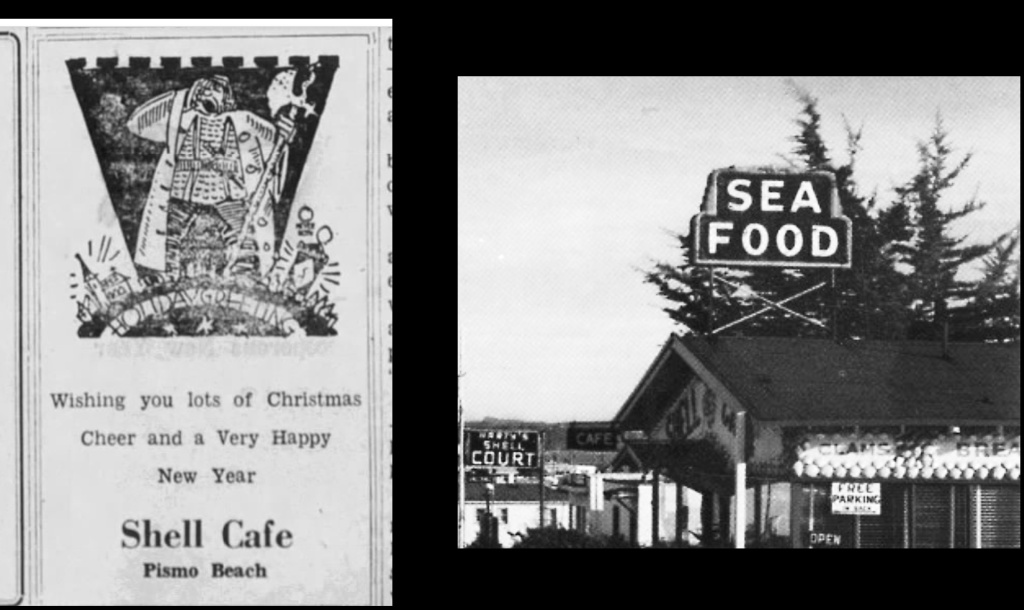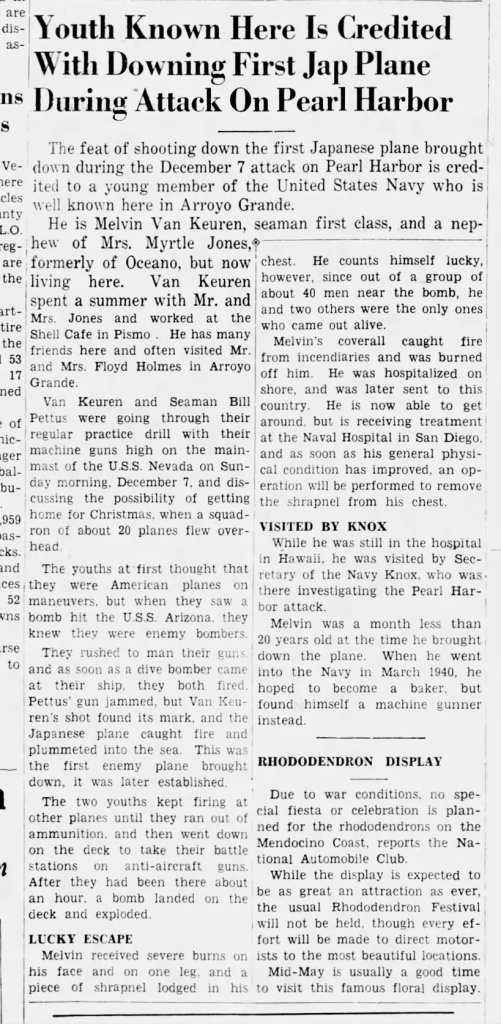It’s one of the great stories of American naval history. At Pearl Harbor, here is the aging USS Nevada at the end of Battleship Row, at bottom left, just astern of Arizona, which is anchored inboard of the repair ship Vestal. You can see the concussions from torpedo hits on the outboard battleships ahead of Arizona. That ship has about twelve minutes to live.

The attack came during the morning Colors Ceremony, when bands played the National Anthem as each battleship hoisted its colors. The trombonist on Arizona’s band, Jack Scruggs, killed just after this photograph was taken, grew up in Arroyo Grande.
The Officer of the Watch on Nevada was Ens. Joseph Taussig, about Scruggs’s age, twenty-one or twenty-two. He was standing his very first watch while most of the ship’s senior officers were ashore. He was so green that he had send a sailor over to Arizona to ask what size flag was appropriate to hoist for the morning formalities. Then the bombs began to fall.
Nevada’s band had begun to play the Anthem. They continued to play the Anthem. When machine-gun bullets began to splinter the teak deck, they paused for a moment, somehow resumed the song in unison, finished it, and then ran like hell for their action stations. (Arizona’s band ran for their stations in the No. 2 gun turret, near the bow and near where the fatal bomb hit. None survived.)
Lieutenant Lawrence Ruff was attending Mass on the hospital ship Solace at this moment. He immediately caught a launch back to Nevada, assumed command topside with Taussig as his anti-aircraft officer. The ensign had done something right, he would find out later: he’d left two of the battleship’s four boilers lit. It normally took a ship the size of Nevada two hours to come to full power, but two boilers were sufficient to get her underway. Ruff gave the command to make a run for the channel exit. The oldest ship on Battleship Row was the only one to steam away from the flames and smoke that blanketed the anchorage off Ford Island.
Sailors cheered as she passed.
Nevada didn’t make it to the open sea. Crippled by at least one torpedo and six bomb hits, she lost headway. Her run ended when Lieutenant Ruff ordered her beached on Waipo Point, leaving the narrow channel open.
And that brings us to the Shell Cafe in Pismo Beach, at the north end of Price Street in those years. The Christmas ad is from a 1939 Arroyo Grande Herald-Recorder. (The Shell’s still around today, but in Grover Beach.)
It’s natural to focus on the horrific losses at Pearl Harbor, but the attackers took losses, too. Twenty-nine planes were shot down and five midget submarines sunk. Only one ship in the Pearl Harbor Striking Force, the destroyer Ushio, survived the war.
The first of the attacking planes shot down was claimed by USS Nevada. It’s better for me to let the newspaper article tell the story. From the May 8, 1942, Arroyo Grande Herald-Recorder:
“…he hoped to become a baker, but found himself a machine gunner instead.” That is a fine piece of writing.
Both Melvin and his ship survived that terrible day. Here is Nevada approaching drydock after being refloated:

And these are her main batteries opening fire at German positions along Utah Beach on D-Day. Nevada was repaired at Pearl Harbor, overhauled and modernized at Puget Sound, and continued her war over 7,300 miles away and two and a half years removed from the place where the ship had revealed her heart in her run for the sea.
On June 6, 1944, Nevada was granted the honor of being the first ship to open fire on the invasion beaches.

Melvin the hopeful baker survived his war, too, but his wounds sound severe. Maybe they were a factor in his premature death in 1959. He re-enlisted three times and, after the war, retired as an enlisted man in the United States Air Force. He’s buried at Forest Lawn, next to his mother.
This is his tombstone. Sadly, there’s not enough room on it to record the way he revealed his heart, too, on December 7, 1941.





